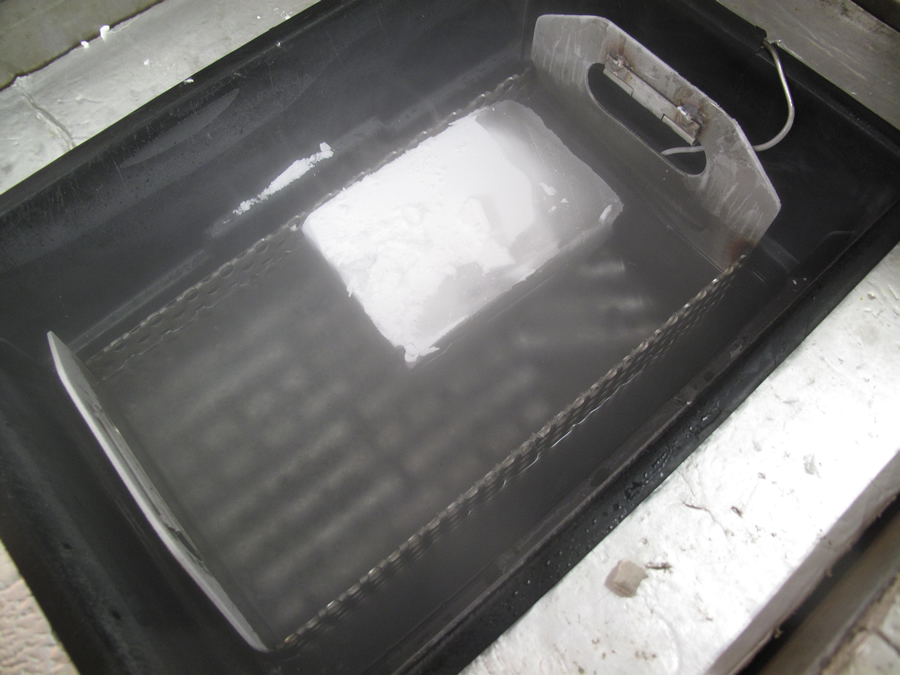
Cryogenic Processing (Cold Stabilisation)
Introduction
Sub-zero process treatments of steels are a widely accepted set of operations, that are often employed with the following
techniques:
Shrink Fit Assembly This technique is conveniently used where parts have precision dimensional fits, and difficult to assembly together.
Cold Treatments After the hardening processes, these can improve the optimum blend of the following properties:
- hardness
- strength
- wear resistance
- dimensional stability
- toughness
- impact resistance
- fatigue resistance
Cryogenic Treatments These are carried out usually with liquid nitrogen, and enables the formation of fine carbides, within the steel microstructure. These further optimise many of the above physical properties of steels.
Each of these processes is described below, and Davis Scientific Treatments has extensive experience with them.
Shrink Fit Assembly
Metals expand with heating, and when cooled they contract. In many industries, notably hydraulics and aerospace, assemblies are designed with close dimensional fits, or, at room temperature, interference fits.
In these circumstances, the shaft is often treated at a cold temperature, so that it's size is reduced. The mating component is
heated.
Then free assembly can be carried out, and the assembled parts allowed to return to room temperature.
Cold Stabilisation Treatments
These treatments are employed with castings, forgings, and machined parts, made in a wide range of tool steels, and stainless steels. Carburised steels are also frequently processed with these treatments.
Cold treatments are additional steps in the heat treatment hardening operation. Usually they are carried out immediately after the conventional hardening and quenching process.
The hardness of a steel increases with the increasing percentage of martensite formed in the material.
Wear resistance is closely related to hardness, which itself is linked to the formation of carbides in the structure.
Some components, such as gears, need impact toughness, and this characteristic is also dependent on carbides in the material.
Generally, the number of properties of steels (listed in the Introduction above) are optimised by careful selection of cold
stabilisation techniques.
Microstructure in Cold Stabilisation
The basic hardening process creates austenite in the microstructure. Quenching causes some austenite to be transformed into martensite. Tempering allows carbides to be formed.
The conversion of austenite into martensite is dependent on the temperature. As the Carbon content increases, the martensite finish temperature has to be decreased. For example, in a 1- 1.5 % Carbon steel, temperatures below -70 deg C are usually employed.
Carburising steels need cold treatment, to deal with the higher surface content of Carbon.
Cooling to sub-zero temperatures, therefore, promotes this transformation of austenite to martensite, which increases hardness and strength.
Retained austenite is unstable at room temperature, and so the microstructure changes over time.
Where dimensional stability is a requirement, e.g. with parts having very precise tolerances, repetitive cold treatment cycles
are most advantageous.
Frequently, many applications of cold stabilisation operations are performed to optimise material properties, 2 or 3 times being common.
Cryogenic Processing
The wear resistance, hardness and dimensional stability of tool steels is especially important in the performance of tool steels.
Lower temperature treatments,using liquid nitrogen, create the conditions whereby very fine carbides are formed in higher alloy tool steels.
It is thought that the martensite, already required hardness, etc, transforms into a microstructure prominent in precipitated and finely distributed carbides.
Extended time at the cryogenic temperature significantly promotes the amount of carbide formed.
Davis Scientific Treatments
Here at DST, we perform sub-zero treatments of steel parts.
For many applications, the components are submerged in acetone, and then carbon dioxide is added. This method greatly improves the thermal transfer, and so the appropriate component temperature is obtained.
High accuracy temperature control is achieved, using closely calibrated thermocouples, and monitored in real time, by our software and equipment.
Please contact us at DST for a quote, or any technical advice about such processes. We are always keen to help our customers.
